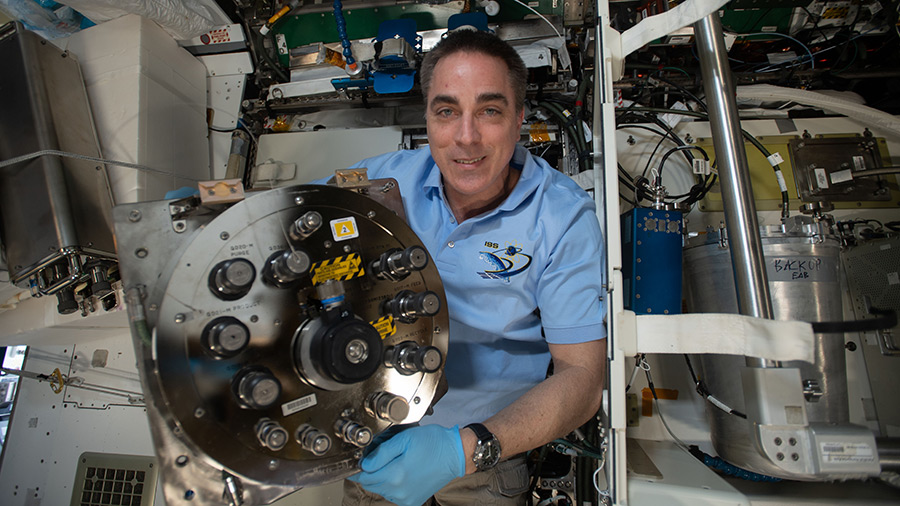
The Expedition 63 crew tended to a variety of science hardware Tuesday servicing the gear and updating software that operates the advanced research devices. Fitness tests and ongoing lab maintenance rounded out the schedule aboard the International Space Station.
A trio of science facilities supporting physics and biology investigations received hands-on attention throughout the day. Commander Chris Cassidy first connected a laptop computer to the Electrostatic Levitation Furnace (ELF) and updated the software that runs the extreme temperature research device.
The veteran NASA astronaut also set up the Confocal Space Microscope, which observes cellular and tissue functions using fluorescence and spatial filtering techniques. Cassidy then replaced filters inside the Life Science Glovebox (LSG) which enables two crew members to conduct biology and technology research at the same time.
The ELF, among numerous other research facilities, is housed inside the Columbus lab module from the European Space Agency (ESA). The specialized confocal and wide-field microscope and the LSG reside in JAXA’s (Japan Aerospace Exploration Agency) Kibo lab module. Columbus has been attached to the station since February 2008, while the three-part Kibo was installed over a period between March and July 2008.
Today was cosmonaut Ivan Vagner’s turn to take a fitness test on the Zvezda service module’s treadmill. The once-a-month physical evaluation sends data down to researchers collected from sensors attached to a crew member during the 90-minute exercise. Vagner also studied ways cosmonauts might pilot spacecraft and robots on future planetary missions.
Cosmonaut Anatoly Ivanishin deactivated gear that observed Earth’s nighttime atmosphere in near-ultraviolet wavelengths. The three-time station resident then spent the rest of the day inspecting Russian life support gear.
